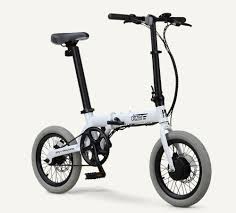
Electric folding bikes (e-bikes) offer an innovative solution for urban commuting, combining the portability of folding bikes with the convenience of electric assistance. One common question among potential users is whether electric folding bikes are allowed on public transportation. This article explores the policies and considerations for bringing electric folding bike on buses, trains, subways, and other public transport systems, highlighting the advantages, challenges, and tips for a seamless commuting experience.
Table of Contents
TogglePolicies on Electric Folding Bikes in Public Transportation
The allowance of electric folding bikes on public transportation varies widely depending on the country, city, and specific transit authority. Generally, the compact nature of folding bikes makes them more acceptable on public transport compared to full-sized bicycles. However, there are some key factors to consider:
- Size and Weight Restrictions
Most public transportation systems have size and weight restrictions for items brought on board. Electric folding bikes, when folded, typically fit within these limits, but it’s essential to check the specific dimensions and weight restrictions of the transit system you plan to use. Some systems may have specific guidelines for the maximum size and weight of folding bikes.
- Folding Mechanism
The ease and speed of folding and unfolding the bike are crucial. Transit authorities often require that bikes be folded quickly and efficiently to avoid inconveniencing other passengers. Bikes with a simple and robust folding mechanism are generally more acceptable.
- Peak Hours and Crowded Conditions
Many transit systems have restrictions on bringing bikes during peak hours when the trains or buses are crowded. This is to ensure passenger safety and comfort. Off-peak travel is usually more accommodating for electric folding bikes. It’s advisable to check the specific peak hours of your local transit system and plan your travel accordingly.
- Safety and Cleanliness
Transit authorities prioritize the safety and cleanliness of their vehicles. Electric folding bikes should be clean and in good working order to avoid any issues. Additionally, securing the bike properly to prevent it from moving or causing injury during transit is important.
Advantages of Bringing Electric Folding Bikes on Public Transportation
- Extended Range and Flexibility
Combining public transportation with an electric folding bike extends your range significantly. You can cover greater distances by riding to a transit station, taking public transport, and then riding again to your final destination. This flexibility is particularly beneficial in urban environments with heavy traffic.
- Cost Savings
Using a combination of an electric folding bike and public transportation can save money on fuel, parking fees, and other commuting costs. Many cities also offer discounted fares or incentives for using eco-friendly transportation options.
- Reduced Carbon Footprint
Electric folding bikes contribute to reducing your carbon footprint by providing a green alternative to cars and motorcycles. Combining this with public transportation further minimizes environmental impact, supporting sustainable urban living.
- Health Benefits
Riding an electric folding bike provides moderate physical exercise, promoting cardiovascular health and muscle strength. Integrating cycling into your daily commute can contribute to overall well-being and fitness.
Challenges and Considerations
- Storage Space on Public Transport
Limited storage space on buses, trains, and subways can be a challenge. Ensure that your electric folding bike fits within the designated areas for luggage or folding bikes. Some transit systems have specific compartments or racks for bikes.
- Compatibility with Transit Policies
Different transit authorities have varying policies regarding electric folding bikes. Research and understand the specific rules of your local transit system to avoid any surprises. Compliance with these policies ensures a smooth and hassle-free commuting experience.
- Handling and Security
Handling an electric folding bike in crowded public transport can be tricky. Be mindful of other passengers and ensure that your bike is secured and does not obstruct pathways. Additionally, consider using a lock to secure your bike when not in use.
- Battery Considerations
Lithium-ion batteries, commonly used in electric bikes, have specific regulations regarding their transport. Some transit systems may have restrictions on the type or size of batteries allowed on board. Check these regulations beforehand to ensure compliance.
Tips for a Seamless Commuting Experience
- Plan Ahead
Research the specific policies of your local transit system regarding electric folding bikes. Plan your route and schedule to avoid peak hours and crowded conditions.
- Use a Protective Cover
Using a cover for your electric folding bike can protect it from damage and keep it clean. It also makes handling easier and more convenient.
- Practice Folding and Unfolding
Familiarize yourself with the folding and unfolding mechanism of your bike. Practice doing it quickly and efficiently to avoid delays and inconveniences during your commute.
- Be Considerate
Be considerate of other passengers and transit staff. Keep your bike clean, secure it properly, and ensure it does not obstruct pathways or seating areas.
Conclusion
Electric folding bikes offer a practical and efficient solution for urban commuting, and their compatibility with public transportation enhances their appeal. While policies vary, most transit systems accommodate these bikes, especially during off-peak hours and when they meet size and weight restrictions. By understanding and adhering to local regulations, planning ahead, and being considerate of other passengers, you can enjoy the benefits of combining electric folding bikes with public transportation for a seamless and sustainable commuting experience.